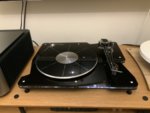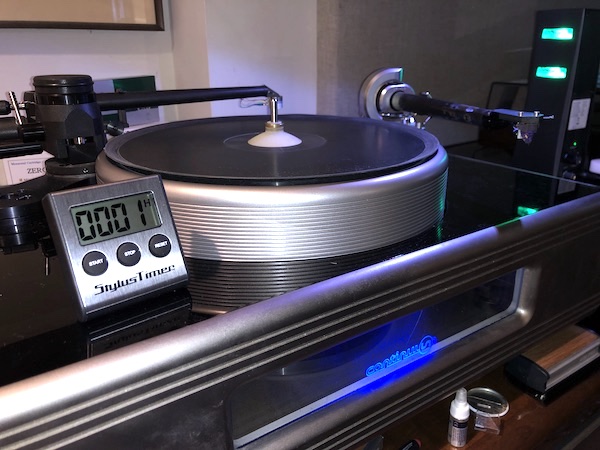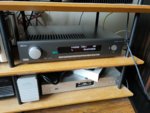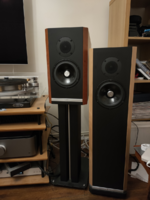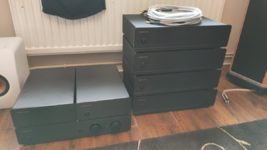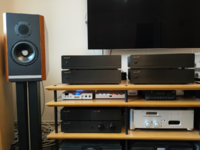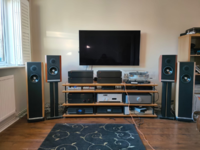Ed Selley
Active Member
We had one of these in the last place and it was handy as a sort of placeholder for things that weren't necessarily direct recommendations but still tickled our fancy. I've recreated it because it's better than dropping wholly random things into the Equipment Recommendations thread. And this one is a bit random. Good random though.
When I say the words 'active speaker', the thing that springs to mind is something like this;

or this;
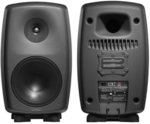
Over time, the concept of an active speaker has come to be seen as a self-contained device with power (and sometimes processing on board). In actuality, an active speaker is simply one that has a powered crossover in front of the amplification rather than behind it- so the signal goes preamp, crossover, then amplification and onto the drivers (it also means a speaker with the amp in the cabinet but a conventional crossover is powered rather than active but I digress). Often this is all in the speaker cabinet... but it doesn't have to be.
This is a Kudos Titan 505

In the tradition of British audio, it is built by quiet, intense, clever people in a light industrial unit in the middle of nowhere. Apropos of nothing, it is one of my very favourite speakers you can buy at any price. If you look at the terminal panel though, you'll see something interesting;
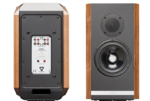
As well as a standard pair of 4mm inputs acting on a conventional crossover, there's a set of additional connections that allow for the crossover to be bypassed and the drivers to be powered directly. This sounds like a recipe for drivers in space but there's a method in the madness. Enter Exposure;
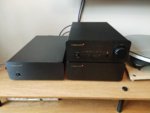
Another company in a big shed full of clever people, Exposure has been making amplifiers since the early 1980s. In this case, they have worked with Kudos to build something called the VXN. This is a crossover network for the Titan 505 that is housed in its own chassis with an external PSU. In the picture above, you see a VXN and PSU with an Exposure preamp. This works as normal but outputs a stereo signal to the VXN which sets to work.
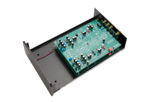
That's a Titan crossover, only it's a Titan crossover that is quieter and more efficient than one in a speaker can ever be, made even quieter because this isn't in the same chassis;
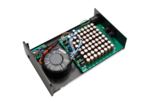
As you can see, Exposure's answer to 'can a PSU have too many smoothing caps?' is 'not really.'
From the back of the VXN, you can then attach power amplifiers; one for each driver;
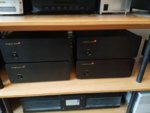
As the Titan 505 is only a two way, this means that 'only' four 80 watt monoblock power amps are needed. Remember; this is the principle by which single chassis active speakers function too but here, each amp is physically isolated from the other and has its own PSU and mains supply. Each amp then outputs directly to the driver in question;

And, once you have very carefully (and fuck me, do I mean carefully), wired it together, you have an active speaker system with a powered crossover acting on amplifiers coupled directly to the drivers, only not in the same cabinet.
The saner of you are looking at this and spotting one or two issues. The amplification for this system has seven boxes and six mains plugs. The wiring diagram is not the work of a moment either (and the total cost of the- not terribly high end- cables kindly loaned to harness it is over $700). It takes a key advantage of a normal active speaker- slimming down the box count- and completely demolishes it.
There are some advantages though. With the crossover not sapping amp power, the 80 watts of amp per channel goes a very long way and crosstalk and noise measurements are very, very low. The other thing is that while this one is an all Exposure system but it doesn't have to be. The only components from them that need to be there is the VXN and its power supply. Effectively, you can make the Titan active with any amplification- pre and power- that takes your fancy. What's more, if other speaker manufacturers add direct inputs (and a few are looking at it), Exposure can modify the VXN to be their crossover too.
Anyway, it's here for a bit and I thought you might find it interesting.
When I say the words 'active speaker', the thing that springs to mind is something like this;

or this;

Over time, the concept of an active speaker has come to be seen as a self-contained device with power (and sometimes processing on board). In actuality, an active speaker is simply one that has a powered crossover in front of the amplification rather than behind it- so the signal goes preamp, crossover, then amplification and onto the drivers (it also means a speaker with the amp in the cabinet but a conventional crossover is powered rather than active but I digress). Often this is all in the speaker cabinet... but it doesn't have to be.
This is a Kudos Titan 505

In the tradition of British audio, it is built by quiet, intense, clever people in a light industrial unit in the middle of nowhere. Apropos of nothing, it is one of my very favourite speakers you can buy at any price. If you look at the terminal panel though, you'll see something interesting;

As well as a standard pair of 4mm inputs acting on a conventional crossover, there's a set of additional connections that allow for the crossover to be bypassed and the drivers to be powered directly. This sounds like a recipe for drivers in space but there's a method in the madness. Enter Exposure;

Another company in a big shed full of clever people, Exposure has been making amplifiers since the early 1980s. In this case, they have worked with Kudos to build something called the VXN. This is a crossover network for the Titan 505 that is housed in its own chassis with an external PSU. In the picture above, you see a VXN and PSU with an Exposure preamp. This works as normal but outputs a stereo signal to the VXN which sets to work.

That's a Titan crossover, only it's a Titan crossover that is quieter and more efficient than one in a speaker can ever be, made even quieter because this isn't in the same chassis;

As you can see, Exposure's answer to 'can a PSU have too many smoothing caps?' is 'not really.'
From the back of the VXN, you can then attach power amplifiers; one for each driver;

As the Titan 505 is only a two way, this means that 'only' four 80 watt monoblock power amps are needed. Remember; this is the principle by which single chassis active speakers function too but here, each amp is physically isolated from the other and has its own PSU and mains supply. Each amp then outputs directly to the driver in question;

And, once you have very carefully (and fuck me, do I mean carefully), wired it together, you have an active speaker system with a powered crossover acting on amplifiers coupled directly to the drivers, only not in the same cabinet.
The saner of you are looking at this and spotting one or two issues. The amplification for this system has seven boxes and six mains plugs. The wiring diagram is not the work of a moment either (and the total cost of the- not terribly high end- cables kindly loaned to harness it is over $700). It takes a key advantage of a normal active speaker- slimming down the box count- and completely demolishes it.
There are some advantages though. With the crossover not sapping amp power, the 80 watts of amp per channel goes a very long way and crosstalk and noise measurements are very, very low. The other thing is that while this one is an all Exposure system but it doesn't have to be. The only components from them that need to be there is the VXN and its power supply. Effectively, you can make the Titan active with any amplification- pre and power- that takes your fancy. What's more, if other speaker manufacturers add direct inputs (and a few are looking at it), Exposure can modify the VXN to be their crossover too.
Anyway, it's here for a bit and I thought you might find it interesting.

